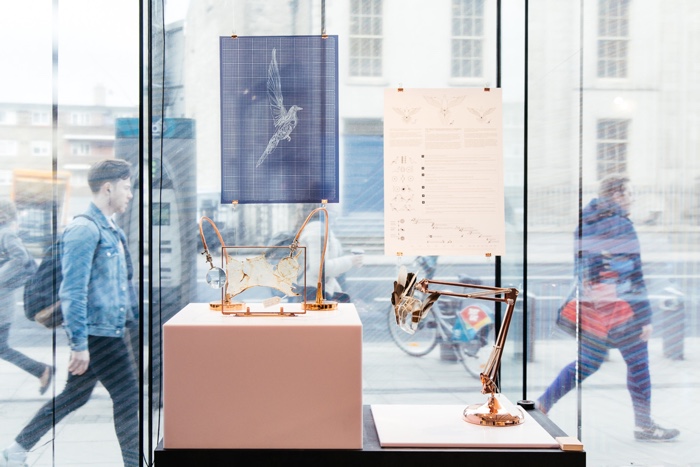
Tina Gorjanc, The Phylogenetic Atelier. Exhibition view at FAKE: THE REAL DEAL? Photo credits: Science Gallery Dublin
We’re going to see a living breathing woolly mammoth soon! Because members of de-extinction circles made us big, confident promises and because media enthusiasm and sleek videos confirmed their words.
Except that the reality is a bit more complicated than that. Scientists are not really going to “resurrect” the long extinct species. The plan is rather to create a GMO. The main strategy adopted by researchers today consists in using cells from the closest living species (in this case the Asian elephant) and edit their genes to obtain DNA as close as possible to that of the extinct animal. The result will be a hybrid organism that carries the genetic material from both species. It won’t be exactly the same hairy mammal as the old one.
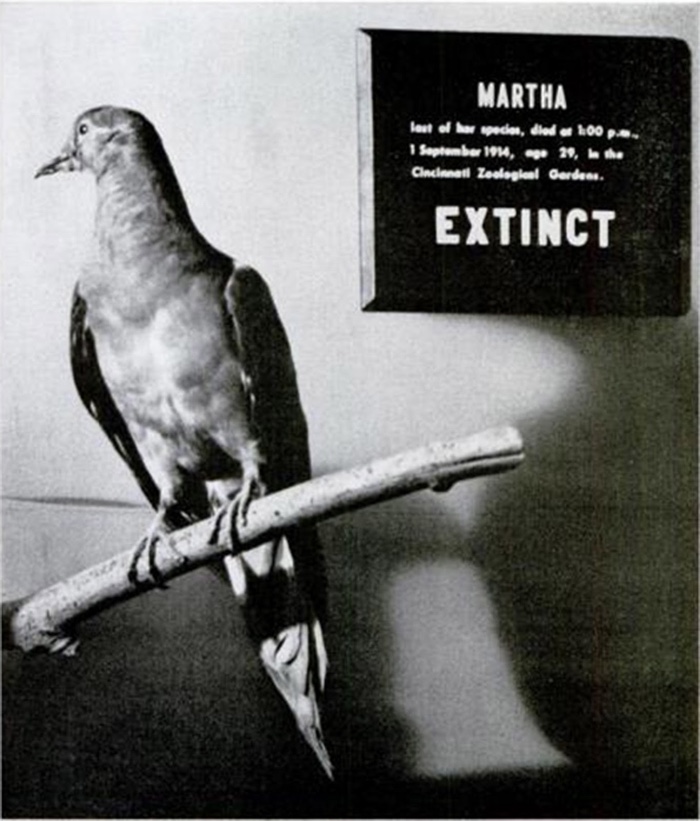
Martha, the last surviving passenger pigeon, died in captivity in 1914, leading to the extinction of her species. She is now being displayed at the Smithsonian National Museum of Natural History. Photo via
A similar copy-pasting exercise in gene editing is going to be applied to other extinct species. The Passenger Pigeon is one of the promising candidate for ‘resurrection’. The migratory bird was by far the most common bird in the United States. It traveled in flocks so huge and so dense that people at the time described how they would darken the skies for hours when they flew over heads. Unfortunately, unbridled hunting and destruction of its habitat reduced the population to a few individuals by the late 19th century. A few decades later the bird was extinct.
By modifying the DNA of the band-tailed pigeon, its closest living relative, the research group Revive & Restore is hoping to hatch the first “passenger pigeon” (or rather its genetic approximation) by 2025.
Critics are concerned about the ethical issues of de-extinction: Are the animals impregnated with manufactured embryos going to be be safe? How can the newborn enjoy a social life similar to the one experienced by passenger pigeons (or mammoths)? Does their habitat still exist as it was? How do you scale the process up so that the whole species has a reasonable chance of survival? How do you avoid problems associated with inbreeding? Shouldn’t our efforts and funding be focused on keeping alive the many plant and animal species that are endangered?
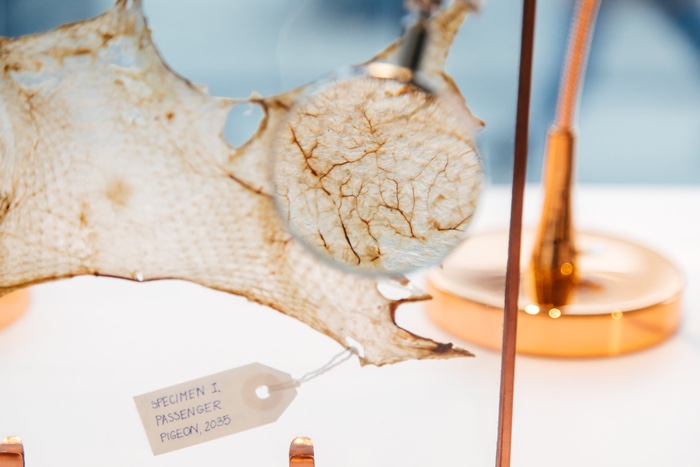
Tina Gorjanc, The Phylogenetic Atelier. Exhibition view at FAKE: THE REAL DEAL? Photo credits: Science Gallery Dublin
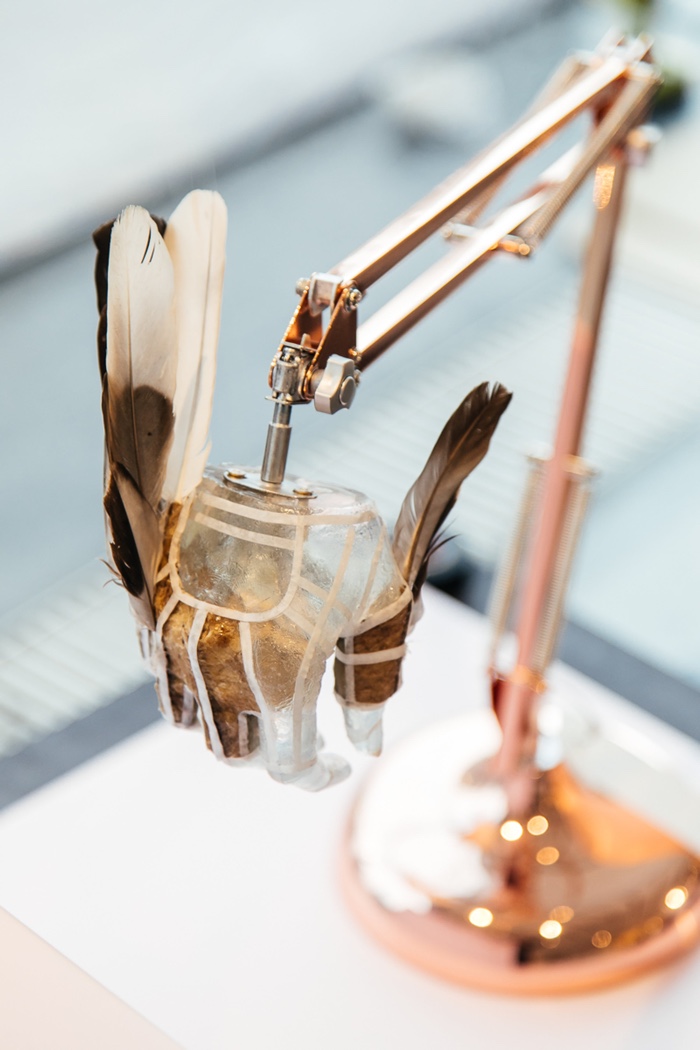
Tina Gorjanc, The Phylogenetic Atelier. Exhibition view at FAKE: THE REAL DEAL? Photo credits: Science Gallery Dublin
With her work The Phylogenetic Atelier, critical and speculative scenario designer Tina Gorjanc is asking whether producing ‘fake’ copies of an extinct animal is an attempt to understand the past, or just an excuse to constantly create the desire for rarity
Her installation stages the aftermath of a successful Revive & Restore’s Great Passenger Pigeon Comeback project. The work suggests a speculative venue that combines a museum, a laboratory and a luxury artisan workshop that in the future will craft gloves out of the leather of fake passenger pigeons. Gorjanc’s installation is exquisite, intriguing but also remarkable for the way it makes tangible the many ethical dilemmas of our fascination with producing new replacements for extinct or endangered biological matter.
In the future, the “passenger pigeon” leather would become a luxury item for the few who are rich enough to afford a pair, prompting the question: Is the de-extinction movement about restoring biodiversity or about producing a few curiosity specimens for the enjoyment of novelty enthusiasts?
The project description explains:
As our current society is becoming mostly driven by the aspiration to constantly innovate it is starting to lack the ability to analyze the cultural understanding of what we are experiencing in the process of innovating. Old definition and stereotypes of original and fake, natural and synthetic, alive and dead are becoming obsolete as new discoveries in the field of synthetic biology are being made.
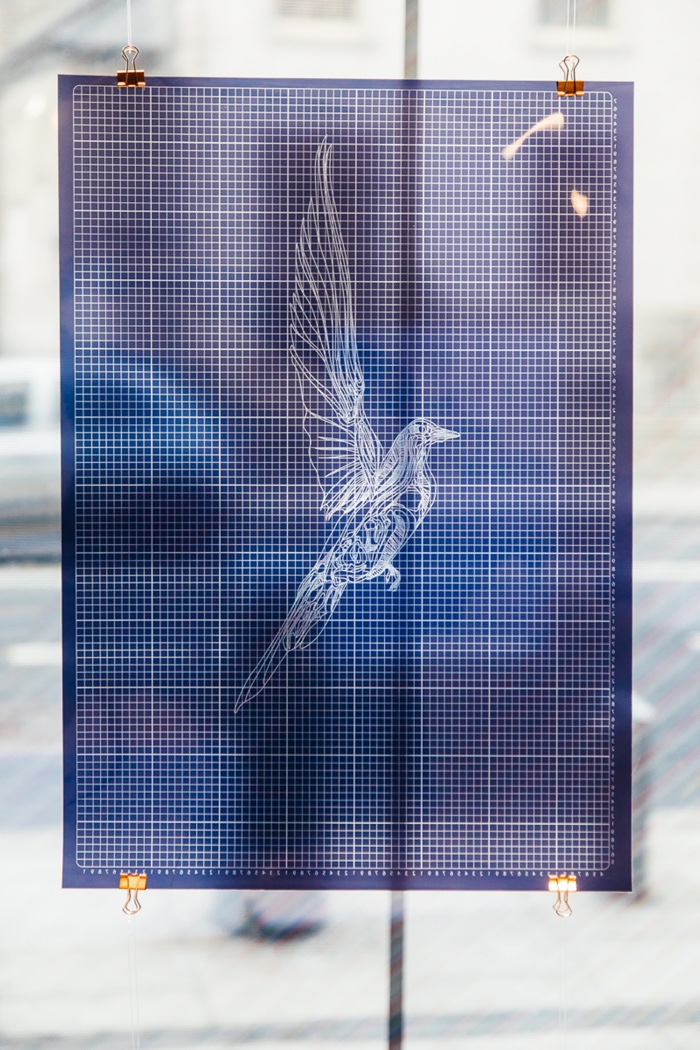
Tina Gorjanc, The Phylogenetic Atelier. Exhibition view at FAKE: THE REAL DEAL? Photo credits: Science Gallery Dublin
The Phylogenetic Atelier is one of the many thought-provoking works you can see at FAKE: The Real Deal?, a free exhibition at Science Gallery Dublin that asks if life is better when we embrace the artificial. I contacted the fashion designer and asked her to tell us more about her project:
Hi Tina! The work ‘showcases an intersection of a laboratory, a museum and a luxury artisan glove workshop”. Why did you choose these 3 settings? What is the role of each facility?
I decided to speculate on a possible intersection of those practices base on the research I have done which evidences that the interest of our commercial market is moving towards such collaborations. The discoveries that have been done in the field of biotech in the past couple of decades are making this technology more accessible and interesting to a wider spectre of companies outside the pharmaceutical and medical domain.
The Phylogenetic Atelier project, therefore, aims to showcase how the advances in the field of synthetic biology and tissue engineering could be applied to preservation and revitalization of endangered/extinct species and form a new type of collaboration with natural history museums that might provide a rich amount of “raw” material for those practices.
The reason for the incorporation of the luxury artisan glove workshop into the presented system mainly has to do with my desire to facilitate the debate around the issues the project is trying to expose.
By simplifying the debate to a de-extinct leather material rather than the entire organism which represents a far more complex classification problem, the project aims to promote critical thoughts around the way we will interact with the de-extinct material and how we are going to shape different aspects of our society around them (legislation, ethical rules and concerns,…) when they suddenly become more mainstream.
Additionally, as the craftsmanship of leather gloves also represents an endangered practice doomed to extinction due to the direction of our commercial market, as well as gloves, being closely linked to the breeding and training of avian species I thought it would be an appropriate base to frame the output of the project.
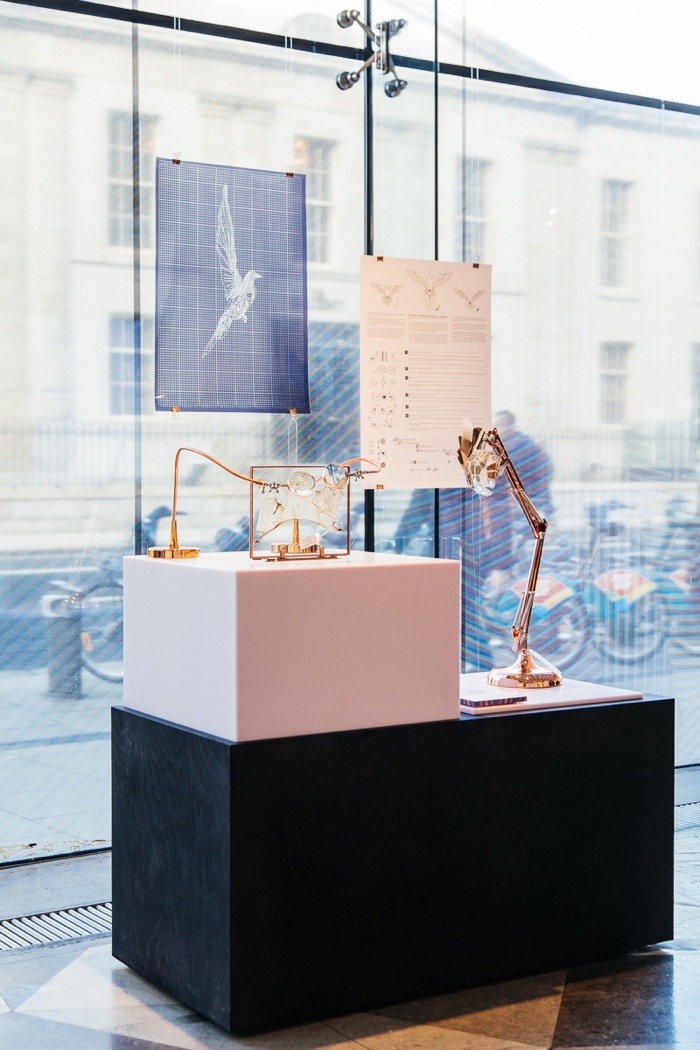
Tina Gorjanc, The Phylogenetic Atelier. Exhibition view at FAKE: THE REAL DEAL? Photo credits: Science Gallery Dublin
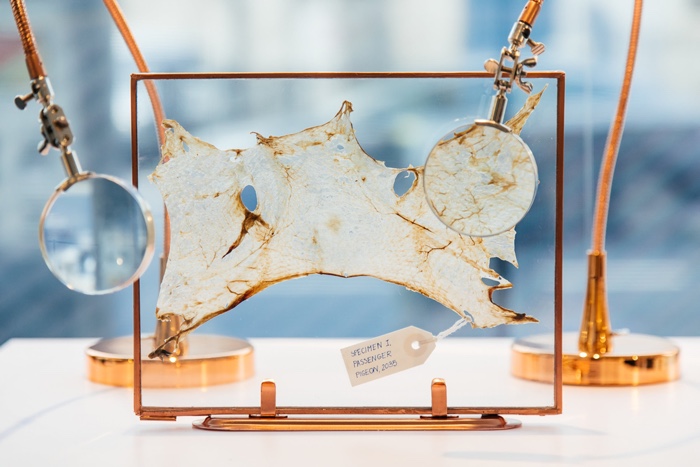
Tina Gorjanc, The Phylogenetic Atelier. Exhibition view at FAKE: THE REAL DEAL? Photo credits: Science Gallery Dublin
The Phylogenetic Atelier is a very seducing exhibit. It’s difficult not to admire the craft and the sheer beauty of the ‘leather’ and the glove. Yet, i think you also wanted to suggest something more complex, more critical and a bit darker about de-extinction. Could you comment on this? What did you want the audience to take from the exhibit?
As our current society is becoming mostly driven by the aspiration to constantly innovate it is, unfortunately, starting to lack the ability to analyze the cultural understanding of what we are experiencing in the process of innovating. Old definition and stereotypes of original and fake, natural and synthetic, alive and dead are becoming obsolete as new discoveries in the field of synthetic biology are being made.
The research behind the proposed work tackles the ethical and philosophical dilemmas concerning our fascination with producing new replacements for extinct or endangered biological matter and their application in our current world.
The aim of the project is to provoke a debate and encourage the audience to start asking themselves questions such as our right as a species to give back the biological specimens that we have taken away from nature? If we can do it also mean that we should? If you could bring back one extinct animal which one would it be and why?
Thanks Tina!
The Phylogenetic Atelier was developed as a commission from the Science Gallery Dublin, part of the Trinity College Dublin. It is part of the exhibition FAKE: The Real Deal? which remains open at the Science Gallery Dublin until the 3rd of June 2018.
Also part of the exhibition: Vapour Meat: a helmet to vape the essence of ‘clean meat’.
